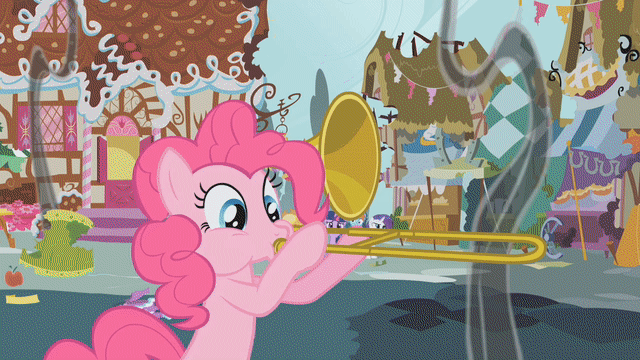Is Russia’s military running out of the equipment, spare parts and supplies necessary to maintain their war in Ukraine? Some reports say so, suggesting it’s because the parts are made in Ukrainian factories.
Vladimir Putin is said to be running out of missiles, tanks and aircraft, because the parts they rely on are made in Ukraine.
The engines of Russian military helicopters and key components for warships, cruise missiles and the majority of the nation’s fighter jets are all made in Ukrainian factories, the Telegraph reports.
The factories, which also produce parts for tanks and ground to air missiles, no longer supply Mr Putin’s army.
I’ve got to take this report with several grains of salt, because I assume those same factories must have stopped supplying Russia with spare parts after the seizure of Crimea and invasion of Donbas back in March of 2014. Are we to believe that Russia has failed to find alternate manufacturing sources for key military equipment for eight years? Russia’s invasion has displayed multiple levels of manifest incompetence, but it’s hard to believe they would be that incompetent for that long. (Now, could spare parts not exist due to massive corruption? That seems plausible, but it’s not the kind of thing you can count on your opponent suffering from.)
The army is also understood to be running low on arms following five weeks of sustained bombardment of Ukrainian cities.
This, on the other hand, seems quite plausible, given the well-documented logistical difficulties, and the furious rate at which Russian forces expended munitions during the initial assault.
The T-72 battle tank is one of the Russian army’s main armoured vehicles but, parts for it are understood to be manufactured in Izyum, an eastern Ukrainian city that Mr Putin’s forces have failed to capture.
The T-72 has been around since 1969. I can believe some of the high tech components for the most modern variants are in short supply, but surely they’ve have multiple source for the vast majority of mechanical parts for a long time now. And even if not, they built some 25,000 of the things, so I can’t imagine they don’t have enough mothballed tanks to provide spares, though it’s going to take time to get cannibalized parts out to field repair centers. (I’m assuming Russia has some sort of field repair capabilities, and I know Russian tank recovery vehicles were spotted on trains en-route to the theater before the war began.)
Open-source intelligence estimates suggest that Russia has lost at least 2,000 tanks and armoured vehicles, although true figures are suspected to be higher.
This I just flat out don’t believe. And indeed, when you go to what appears to be their primary source, they’re including a whole lot of trucks in that list, which aren’t counted as “armored vehicles.” The lesson here is “don’t believe anything that sounds too good to be true” and “always check the primary sources.”
Speaking of primary sources, that Oryx blog list does look pretty useful, though the nature of the methodology (adding up all pictures of destroyed equipment) is certainly suspect to manipulation.
Their summary line for Russian equipment losses as of this post “Russia – 2360, of which: destroyed: 1190, damaged: 41, abandoned: 232, captured: 897.”
Here are the individual type breakdown lines:
Tanks (405, of which destroyed: 190, damaged: 6, abandoned: 42, captured: 167)
Armoured Fighting Vehicles (274, of which destroyed: 129, abandoned: 32, captured: 113)
Infantry Fighting Vehicles (392, of which destroyed: 216, damaged: 2, abandoned: 31, captured: 142)
Armoured Personnel Carriers (81, of which destroyed: 21, damaged: 1, abandoned: 17, captured: 42)
Mine-Resistant Ambush Protected (MRAP) Vehicles (17, of which destroyed: 9, abandoned: 3, captured: 5)
Infantry Mobility Vehicles (76, of which destroyed: 43, damaged: 2, abandoned: 5, captured: 24)
Communications Stations (15, of which destroyed: 4, abandoned: 5, captured: 6)
Engineering Vehicles And Equipment (78, of which destroyed: 23, abandoned: 13, captured: 37)
Heavy Mortars (11, of which destroyed: 3, captured: 8)
Towed Artillery (47, of which destroyed: 9, damaged: 4, abandoned: 5, captured: 29)
Self-Propelled Artillery (72, of which destroyed: 25, damaged: 3, abandoned: 14, captured: 29)
Multiple Rocket Launchers (45, of which destroyed: 18, abandoned: 5, captured: 23)
Anti-Aircraft Guns (3, of which captured: 3)
Self-Propelled Anti-Aircraft Guns (11, of which destroyed: 5, abandoned: 3, captured: 3)
Surface-To-Air Missile Systems (42, of which destroyed: 22, damaged: 1, abandoned: 7, captured: 12)
Radars (4, of which destroyed: 1, captured: 3)
Jammers And Deception Systems (6, of which destroyed: 2, damaged: 2, captured: 2)
Aircraft (19, of which destroyed: 18, damaged: 1)
Helicopters (38, of which destroyed: 33, damaged: 3, abandoned: 1, captured: 1)
Unmanned Aerial Vehicles (21, of which destroyed: 14, captured: 7)
Naval Ships (3, of which destroyed: 1, damaged: 2)
Logistics Trains (2, of which destroyed: 2)
Trucks, Vehicles and Jeeps (698, of which destroyed: 401, damaged: 16, abandoned: 59, captured: 210)
(An aside: You’ve got to hand it to those Russian miltech geeks who look at this:

And confidently declare “Oh, those are two destroyed 120mm 2B11/2S12 heavy mortars!” That’s some #DavesCarIDService level obsession there…)
Keep in mind that Russia only had some 2,500 tanks assigned to active units at the start of the war (though other estimates are considerably higher). But given well-documented Russian maintenance problems, I can well believe several units have sustained losses in excess of that necessary to impair combat effectiveness.
Keep in mind that the Soviet Union lost 83,500 tanks between 1941 and 1945 in World War II. Of course, that was a much broader theater, using much more widely-produced, low-tech tanks. Hell, two-way radios didn’t become standard Soviet equipment until 1944.
For high tech munitions like smart bombs and guided missiles, I can well believe that Russia is running low on stock that can’t easily be replenished under the current sanctions regime. And we see ample evidence that field resupply has been negatively impacted by severe logistical difficulties. But “T-72s lack spare parts because the original factory was in Ukraine” doesn’t pass the smell test.


